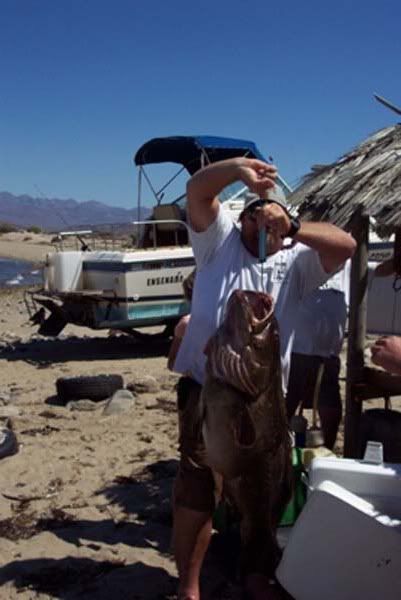Originally posted by Hook
Agree with Paulina.
There really is no excuse for not carrying an inexpensive releasing rig. Well, unless you feel you must kill, I guess.
Picture a 14/0 hook with the shank pointed down. Crimp the barb against the body of the hook. Attach 6 inches of some heavy mono or wire at the middle
of the bend and terminate the other end with a barrel swivel.
Now attach a longer piece of wire/line to the eye and terminate that with a clip swivel. Onto this attach lead of sufficient weight to get it down.
Have a pole with some heavy line on board just for this purpose. Spectra is best, since you want to minimize line stretch.
When you catch a big bottom dweller, attach the hook through the upper lip with the point pointed down. Now lower the fish with a consistent descent
rate to the bottom. Once you're near the bottom, give a quick jerk upward on the rig to "release" the hook from the lip. Even if he revives before you
get there and begins to move off on his own, the hook will release pretty quickly.
Cost of rig-about 5.00-10.00 dollars
Release of an old gulf grouper-PRICELESS!!
[Edited on 2-10-2009 by Hook] |




 They just don't taste as good as the younger "meal
size" fish
They just don't taste as good as the younger "meal
size" fish 















